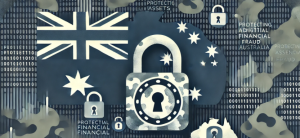In today’s technologically advanced world, digital financial fraud is becoming increasingly prevalent, posing a significant threat to individuals and businesses alike. With Australia being no exception, protecting your financial assets from such fraudulent activities has never been more crucial.
Being vigilant and taking proactive measures can safeguard your hard-earned money from cybercriminals eager to exploit vulnerabilities. In this blog post, we will explore various strategies and tools to help you defend against financial fraud in the digital landscape of Australia. By understanding the risks and implementing the right precautions, you can ensure the safety of your assets.
Understanding the risks of digital financial fraud

To effectively protect your assets, it is crucial to first understand the risks associated with digital transactions. Australia has seen a significant increase in online engagements, leading to more opportunities for fraudsters to exploit vulnerable targets. From fake emails mimicking legitimate institutions to malicious software designed to capture sensitive information, the tactics are varied and sophisticated.
Phishing is one of the most prevalent forms of digital financial fraud. This method involves fraudulent communications that appear to come from trustworthy sources, such as banks or government agencies, in an attempt to trick individuals into revealing personal information. These scams can be conducted via email, phone calls, or text messages, and they often encourage immediate action, such as clicking on a link or providing account details.
Identity theft is another common threat in the realm of digital financial fraud. Hackers may steal personal data, such as your name, address, and date of birth, to access bank accounts or perform unauthorised transactions. Protecting your identity involves securing personal information both online and offline. This includes using strong, unique passwords for each account and regularly monitoring your credit report for any unusual activity.
Educating yourself about digital threats
Staying informed about the latest cyber threats and scams is a vital step in safeguarding your financial assets. Cybercriminals continuously evolve their tactics, and knowledge is your first line of defence. Subscribing to alerts from trusted sources such as banks, cybersecurity organisations, and government agencies can help you stay updated on emerging threats.
Learning about cybersecurity concepts and practices is beneficial for everyone, especially those who rely heavily on digital platforms for financial transactions. Many online resources and courses offer valuable insights into protecting your digital presence. By investing time in understanding cybersecurity basics, you can reinforce your ability to detect and thwart potential scams.
Moreover, engaging with cybersecurity communities and forums online can provide practical tips and real-world experiences shared by others. These interactions can be a valuable resource in learning how to identify fraud attempts and avoid common pitfalls. By exchanging information with like-minded individuals, you can improve your awareness and fortify your defences against digital financial fraud.
Utilising technological solutions
Technology offers a range of solutions designed to protect against digital financial fraud. Implementing robust security software on your devices, such as antivirus programs and firewalls, can act as a barrier against malicious activities. These tools can identify potential threats, alert you to suspicious activity, and prevent harmful software from accessing your information.
Another critical technological solution is the use of two-factor authentication (2FA) whenever possible. 2FA adds an additional layer of security by requiring a second form of verification, such as a code sent via text or email, when logging into accounts. This measure significantly reduces the likelihood of unauthorised access, even if your password becomes compromised.
Utilising password managers can also enhance your security posture. These tools help generate and store complex passwords for various accounts, reducing the risk of using weak or repeated passwords. With a reliable password manager, you can efficiently manage your credentials without worrying about memorising them, thereby maintaining a strong defence against digital financial fraud.
Practical steps to safeguard assets
In addition to leveraging technology, practical steps in your daily routine can further shield your financial assets from fraud. Being cautious with the information you share online is crucial. Avoid providing sensitive details, such as your banking information, over email or social media platforms. Also, be mindful of phishing attempts that often masquerade as legitimate requests for personal data.
Conducting regular reviews of your financial statements is another vital practise. By diligently monitoring your accounts, you can quickly spot any unauthorised transactions and report them to your bank or financial institution. The swift detection of suspicious activity can mitigate potential losses and help authorities address the fraud.
Working with financial institutions
Your financial institution plays a significant role in protecting your assets. Establishing a good relationship with your bank enables you to work together more effectively in preventing and responding to fraud. Many banks in Australia offer alerts and notifications for transactions, which can help you promptly identify unauthorised activities.
Familiarise yourself with the fraud prevention services and policies offered by your bank. Many institutions provide resources and guidelines on recognising and reporting scams. Taking advantage of these services equips you with additional measures and information to protect your financial wellbeing.



